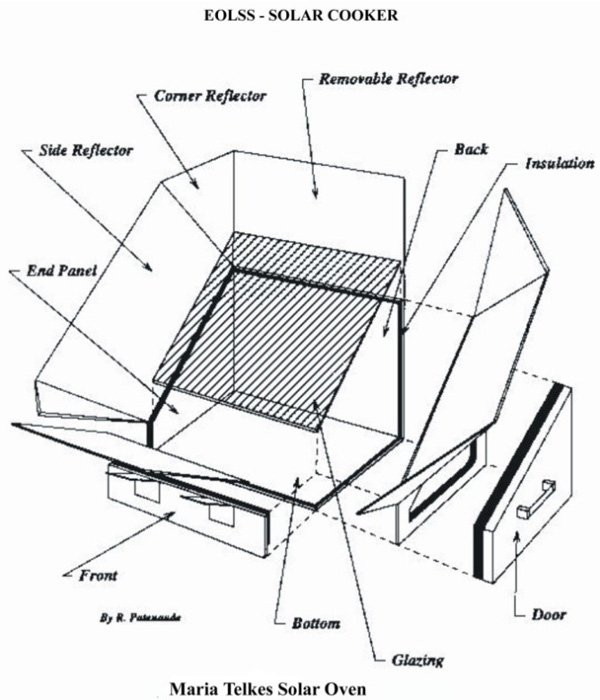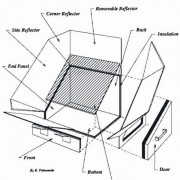Cooking With The Sun

Last week we shared info about retained heat cooking. It’s frequently paired with solar cooking for feeding folks with no earth-generated fuel expenditure at all. But does it work? The cooks at ARC think that it’s great – in the summer time when we have lots of sunlight.
Our preferred solar oven was invented in 1953 by Mária Telkes. She was a Hungarian-American biophysicist, scientist and inventor who became well known for her work in solar energy. Her many inventions also included a solar home heating system and solar powered water desalinator.
We like Telkes solar cookers that are big enough to generate firepower that is similar to wood burning cookstoves. A solar cooker is so easy to use and so much cleaner! Of course it is different because a Telkes solar cooker is an oven that is outside on the porch of the kitchen. The cook stands in the shade from the roof and the solar cooker basks in the sun. Just point it at the sun, put the food in the oven, and you are free to do everything else.
Here’s how we do the simple math to create a powerful Telkes solar cooker. Let’s say, as rules of thumb, that:
- There are about 250 BTUs in a square foot of sunshine per hour.
- There are approximately 8,600 BTU in a pound of wood. Remember, wood is stored solar energy.
- Therefore it takes a solar oven with about 34 square feet of intercepted sunlight to equal the cooking power of one pound of wood burned in an hour.
- In a solar oven with the firepower of one pound of wood (burned in an hour) the intercepted sunlight should be about 6′ by 6′. This is the measurement at the top edges of the solar reflectors – the widest part of the cooker.
- About 1/3 of the energy cooks the food and about 2/3rds of the energy is lost.
- In our 6′ by 6′ solar oven, 3,000 BTUs would boil 2 gallons of water in about an hour. The light weight pot is black, it has a tight lid, the oven is well insulated, and airtight. The glass is double glazed. The losses are minimized and the solar gain is optimized with large reflectors on all sides. Large amounts of food can be made every sunny day without using up any earthly resources.
In our experience, solar cookers are great when they are big enough to do the cooking task in a reasonable amount of time. ARC cooks have used them in the summer to cook lunch and dinner for 20 people and it’s nice to have a no-fuss oven that needs little tending. Solar cooking is certainly more comfortable when cooks don’t have to deal with a hot fire on summer days. At the Aprovecho farm, the staff have used stored solar energy in the winter (biomass) and direct solar energy (sunlight) in the summer for cooking, heating water, etc.
Of course, everything is dependent on sunlight.





Leave a Reply
Want to join the discussion?Feel free to contribute!